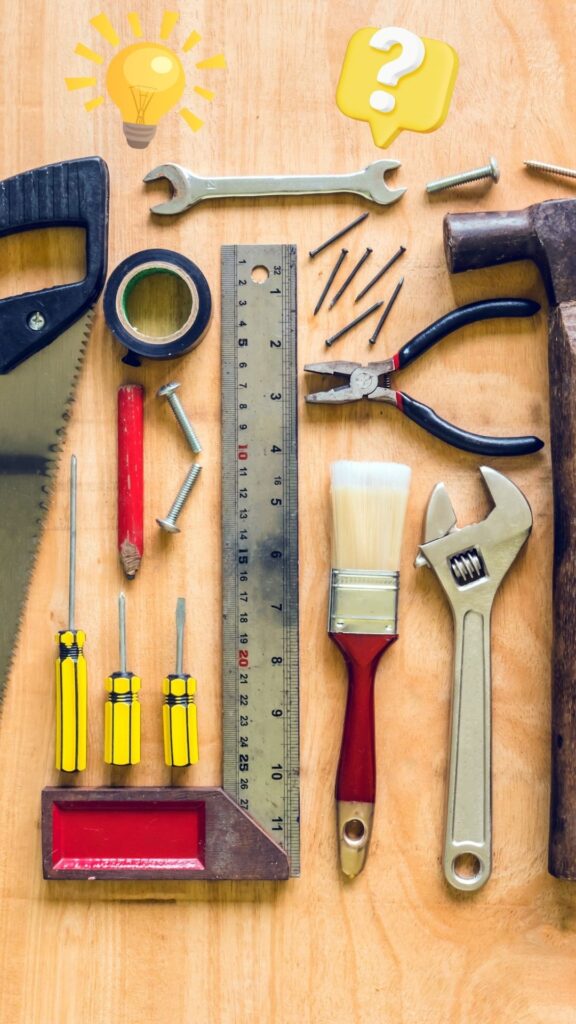
In a world where throwaway culture seems to be the norm, learning to fix things is a valuable skill that not only saves you money but also empowers you to reduce waste and take better care of your belongings. Whether you want to mend a favorite pair of jeans, fix a broken appliance, or even dive into electronics repair, this step-by-step guide will help you get started on your journey to becoming a handy DIY enthusiast.
Step 1: Start with the Basics
Identify Your Interests: The first step is figuring out what you’d like to learn to fix. Perhaps you’re drawn to electronics, small appliances, furniture, clothing, bicycles, cars, or basic household repairs. Identify your interests to focus your learning efforts.
Learn Safety Precautions: Before you dive into any repairs, make safety a priority. Understand the safety precautions related to the items you’re working on. For electronics, this includes awareness of electrical hazards, while automotive repairs require a different set of safety considerations.
Step 2: Gather the Right Tools
Invest in Basic Tools: Every DIY enthusiast needs a set of essential tools. These often include screwdrivers, pliers, wrenches, and a multimeter for electronics. Over time, you can expand your toolkit based on your specific repair interests.
Specialized Tools: As you tackle more complex repairs, you may need specialized tools. You can acquire these as your skills grow.
Step 3: Learn Online
Explore Online Tutorials: The internet is a treasure trove of resources. Websites like YouTube, Instructables, and iFixit offer step-by-step guides for repairing a wide range of items. These tutorials are often accompanied by videos, images, and user comments for additional insights.
Join Online Communities: Online communities and forums are great places to connect with other DIY enthusiasts. Platforms like Reddit’s “r/fixit” and specific forums related to your chosen repair area provide a space to ask questions, share experiences, and seek advice.
Step 4: Take a Course
Local Workshops: Check if there are any local workshops or classes available in your area. Community centers, makerspaces, or even adult education programs may offer hands-on repair workshops.
Explore Online Courses: Online learning platforms like Coursera, Udemy, and LinkedIn Learning provide courses on various repair topics. Look for courses that align with your interests and skill level.
Step 5: Practice, Practice, Practice
Start Small: Building confidence begins with simple projects. For example, practice sewing on a missing button, replace a bicycle tire, or fix a leaky faucet. These small wins help you gain valuable experience.
Gradually Challenge Yourself: As you become more comfortable, challenge yourself with more complex repairs. Try fixing a household appliance, like a toaster, or attempt basic car maintenance tasks such as changing the oil.
Step 6: Troubleshoot and Problem Solve
Understand the Problem: Before attempting any repair, take the time to understand the problem thoroughly. What’s broken, and why?
Learn to Troubleshoot: Develop your problem-solving skills. Learn to work through issues logically, research solutions, and diagnose problems accurately.
Step 7: Seek Expert Advice
Ask for Help: Don’t be afraid to seek help from experienced individuals. Reach out to repair professionals, ask questions in online communities, and seek guidance when you encounter challenges.
Step 8: Document Your Work
Keep a Repair Journal: Document the repairs you complete. Include details about what you fixed, any challenges you faced, and what you learned from each experience. A journal helps you track your progress and learn from past repairs.
Step 9: Safety First
Prioritize Safety: Whether you’re dealing with electronics, appliances, or household repairs, safety should be your top concern. Be cautious and adhere to safety guidelines, use personal protective equipment (PPE) when necessary, and always follow best practices for the items you’re working on.
Step 10: Build Confidence
Start a Personal Project: Once you’ve gained confidence, embark on a personal repair project. It can be a hobby, a way to enhance your living space, or even a small side business, depending on your skills and interests.
Step 11: Be Patient
Expect Mistakes: Remember that making mistakes is a natural part of the learning process. Don’t get discouraged when things don’t go as planned; view them as opportunities to learn and improve.
Persistence Pays Off: Becoming proficient at fixing things takes time, so be patient and persistent. Keep your curiosity alive, and you’ll soon become a skilled DIY enthusiast capable of repairing a wide range of items.
Learning to fix things is not only a money-saving endeavor but also a journey toward a more sustainable and self-reliant lifestyle. So, grab your tools, keep your safety gear on hand, and let’s embark on this adventure together. Happy fixing!